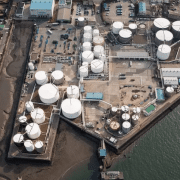⚠️ IMPORTANT LEGAL DISCLAIMER:
The information provided on this page is for general informational purposes only and does not constitute legal, financial, or investment advice. Oil and gas laws, mineral rights regulations, and royalty structures vary significantly by state and jurisdiction. While we strive to provide accurate and up-to-date information, no guarantee is made to that effect, and laws may have changed since publication.
You should consult with a licensed attorney specializing in oil and gas law in your jurisdiction, a qualified financial advisor, or other appropriate professionals before making any decisions based on this material. Neither the author nor the publisher assumes any liability for actions taken in reliance upon the information contained herein.
The oil and gas industry is one of the largest and most complex industries globally, involving an extensive supply chain, multiple stakeholders, and an intricate web of regulatory frameworks. One of the critical aspects of this industry that often goes unnoticed is the management of royalty payments. Royalty payments are a significant part of the financial ecosystem within the oil and gas industry, where producers pay landowners, governments, and other stakeholders for the extraction of natural resources from their land or property. These payments are often complex, time-sensitive, and essential for maintaining good relationships between the involved parties.
In recent years, the role of technology has become increasingly important in enhancing the efficiency, accuracy, and transparency of oil and gas royalty payments. The advent of advanced software systems, automation, data analytics, blockchain, and cloud-based solutions has brought profound changes to how these payments are managed. With the constant pressure on the oil and gas industry to improve operational efficiencies and reduce costs, technology has emerged as a key enabler of streamlined royalty payment processes. This article delves into the various ways in which technology is transforming the management of oil and gas royalty payments.
Understanding the Complexity of Oil and Gas Royalty Payments
Before exploring the role of technology in royalty payments, it’s important to understand the complexities involved in the process itself. Royalty payments are calculated based on various factors such as production volumes, pricing, costs, and contractual agreements between the involved parties. Typically, these payments are made to landowners (mineral rights holders), governmental bodies, and other stakeholders based on the amount of oil or gas extracted from a specific area.
The complexity arises from several variables, including the different methods of calculating royalties (e.g., percentage of production value, fixed rates, or sliding scales), the involvement of numerous stakeholders, and the need to comply with local and international regulations. Further complicating matters, oil and gas operations often span vast geographical areas with multiple extraction points, each subject to unique royalty agreements.
Additionally, reconciling production data with financial records, ensuring timely payments, and maintaining transparency between stakeholders are vital elements in the royalty payment process. Traditionally, these processes were carried out manually or through inefficient legacy systems, leading to delays, errors, and disputes.
The Impact of Technology on Efficiency | Streamlining Oil and Gas Royalty Payments
One of the main benefits of technology in oil and gas royalty payments is its ability to enhance efficiency. Automation of tasks such as data entry, calculations, and reporting has drastically reduced the manual effort required for processing royalties. Modern software platforms allow for the seamless collection of data from production sites, providing real-time insights into oil and gas production volumes, pricing, and other key metrics. This data can then be automatically fed into royalty calculation models, reducing the chances of errors and ensuring accurate calculations.
Automation has also improved the speed of processing royalty payments.
Rather than relying on manual reconciliation, companies can make payments quickly and accurately, reducing the likelihood of delays and fostering stronger relationships with stakeholders. This is particularly important in the oil and gas industry, where timely payments often contribute to the continued success of operations and help maintain positive relationships with landowners, governments, and other parties.
Advanced Software for Data Integration and Royalty Management
As the oil and gas industry moves toward digitalization, advanced software solutions have become a vital tool in managing royalty payments. These software platforms integrate data from various sources, such as production monitoring systems, accounting software, and legal documentation, allowing stakeholders to access comprehensive and up-to-date information.
For example, some software solutions enable real-time tracking of oil and gas production, as well as tracking contractual agreements with multiple parties. This level of integration ensures that all relevant data is considered when calculating royalty payments, improving accuracy and eliminating discrepancies that could arise from manually entered data. Furthermore, these platforms typically offer customizable reporting capabilities, allowing companies to generate detailed reports on production and payments for internal audits or external stakeholders.
Data analytics is another powerful feature of modern royalty management software. By using predictive analytics, companies can anticipate changes in production, pricing, or market conditions that could affect royalty payments. For example, predictive models can forecast when production will ramp up or decline, allowing companies to plan accordingly and avoid delays or overpayments. This proactive approach not only saves money but also enhances overall operational efficiency.
Blockchain for Transparency and Security
The adoption of blockchain technology has had a significant impact on various industries, and the oil and gas sector is no exception. Blockchain offers a decentralized, tamper-proof ledger system that can enhance transparency and security in the royalty payment process. By using blockchain, every transaction—whether it’s a payment or a contractual agreement—can be recorded in an immutable ledger, which is accessible to all authorized parties in real-time.
For royalty payments, blockchain offers several advantages. First and foremost, it provides a transparent record of all transactions, ensuring that there is no ambiguity or dispute over the amounts paid or owed. This is particularly important when dealing with multiple stakeholders who may have different interpretations of contractual terms or calculations. Blockchain’s transparency also minimizes the risk of fraud or mismanagement of funds, as all parties can trace and verify the legitimacy of each transaction.
Another significant benefit of blockchain is its ability to automate and streamline the reconciliation process. Through the use of smart contracts, royalty payments can be triggered automatically when specific conditions are met, such as a certain production volume or pricing threshold. This eliminates the need for intermediaries and manual processing, speeding up the payment cycle and reducing administrative costs.
Cloud-Based Solutions for Scalability and Accessibility
Cloud technology has become a cornerstone for many industries, offering scalable solutions that are accessible from anywhere with an internet connection. In the context of oil and gas royalty payments, cloud-based platforms provide a flexible and cost-effective solution for managing large amounts of data and facilitating cross-organizational collaboration.
One of the key benefits of cloud-based royalty management platforms is their scalability. As oil and gas operations expand, the volume of data associated with production, royalties, and payments increases. Cloud solutions are designed to handle this growth, allowing companies to scale their systems without the need for expensive infrastructure investments. Additionally, cloud-based solutions ensure that all relevant parties—such as operators, landowners, regulators, and accountants—can access the necessary data in real-time, regardless of location.
The ease of access and collaboration that cloud-based solutions offer also improves communication and transparency. Stakeholders can track payments, review contracts, and access production data at any time, reducing the risk of miscommunication and fostering trust. Furthermore, businesses can integrate cloud systems with other enterprise resource planning (ERP) systems, accounting software, and legal databases, providing a unified approach to royalty management.
Big Data and AI for Predictive Insights
The emergence of big data and artificial intelligence (AI) has further revolutionized the way oil and gas companies manage royalty payments. Big data analytics allows companies to process vast amounts of information, including geological data, production history, and market trends, to gain valuable insights into future production forecasts and pricing trends. These insights can, in turn, inform royalty payment calculations, helping companies prepare for fluctuations in production or pricing.
AI-powered solutions take this a step further by automating decision-making processes based on historical data. For instance, AI models can analyze past royalty payments, identify patterns, and predict future payment scenarios. This allows companies to optimize their payment schedules, avoid overpayments, and ensure they are paying the correct amounts in real-time.
Moreover, businesses can use AI to detect anomalies in payment data, flagging potential discrepancies or errors before they become major issues. By incorporating AI into royalty payment management, companies can reduce the risk of errors, streamline the reconciliation process, and enhance the overall accuracy and timeliness of payments.
Regulatory Compliance and Risk Mitigation | Streamlining Oil and Gas Royalty Payments
The oil and gas industry is subject to stringent regulations, particularly when it comes to royalty payments. Governments often impose complex tax laws, royalty schemes, and reporting requirements that individuals and businesses must adhere to. Technology plays a crucial role in ensuring compliance with these regulations by automating the reporting process and ensuring that individuals and businesses make payments in accordance with local and international standards.
For example, regulatory compliance software can automatically update royalty payment systems with the latest tax codes, royalty rates, and legal requirements. This reduces the risk of non-compliance and the associated penalties.
Automated audit trails ensure that the system properly documents all transactions and makes them easy to review in the event of an audit.
Technology also helps mitigate financial and legal risks associated with royalty payments. By improving the accuracy of calculations and the transparency of transactions, companies can minimize the likelihood of disputes with stakeholders. Additionally, technologies like blockchain ensure that all parties meet the contractual terms and conditions, further reducing the risk of legal challenges.
The Integration of Tech | Streamlining Oil and Gas Royalty Payments
The integration of technology into the oil and gas royalty payment process has had a transformative impact on the industry. By enhancing efficiency, improving transparency, and ensuring compliance, technology has streamlined what was once a cumbersome and error-prone process. From automation and data integration to blockchain and AI, technology is enabling oil and gas companies to manage royalty payments more effectively, saving time, reducing costs, and building stronger relationships with stakeholders.
As the oil and gas industry continues to evolve, the role of technology in royalty payment management will only become more pronounced. With further advancements in AI, big data, and blockchain, the potential for even greater improvements in efficiency, accuracy, and security is vast.</span>
By embracing these technological innovations, oil and gas companies can position themselves to thrive in an increasingly complex and competitive marketplace while ensuring that they handle royalty payments in a timely, transparent, and cost-effective manner.
Do you have any questions related to Streamlining Oil and Gas Royalty Payments? Contact Us here.
Remember: This information is for educational purposes only. Consult qualified professionals for advice specific to your situation and jurisdiction.










